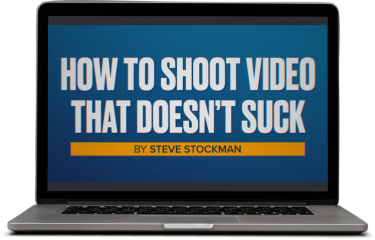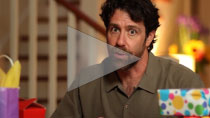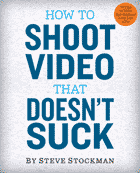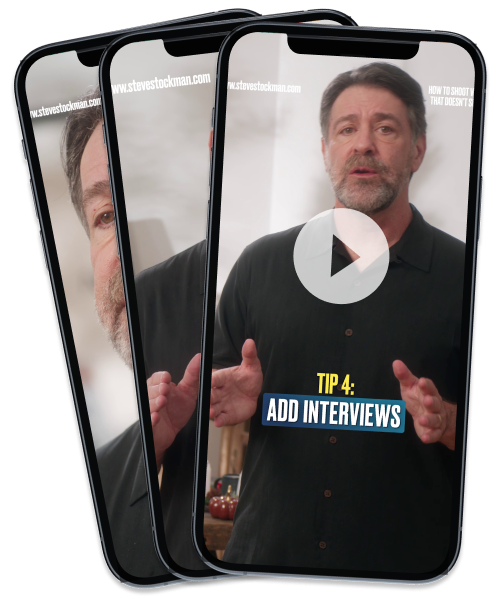“They’re fake!” “They’re actors” “They’re reading from a script!”
You hear these disparaging comments every time you play testimonial commercials in a focus group. Every. Single. Time. But after people talk about how fake it all is and how they can’t be fooled, something interesting happens. When they talk about the messages in the spots, they believe some of them.
The ones they believe? The testimonials shot with real people, saying real things that are important to the viewer. It seems that at some instinctive level we can sense the difference between actors and real people– between ad copy and real emotion. And real is just more credible.
So let me suggest that whether it’s in a :30 or a longer form piece, getting your interviewees to tell the truth is the key to doing testimonials that work.
The video we just finished for SummerStars.org, a free performing arts camp that serves kids in the Boston and New York markets is shot with real people and is completely unscripted. But that doesn’t mean it was shot without a plan, or just any people. Here are some of the tips I put to work to pull out the truth in how people felt about the program:
Learn the truth before you shoot. The Summer Stars team talks to campers, teachers and alumni all the time, and I’ve personally attended and taught at camp. This gave me pretty good first-hand knowledge of what people thought of the camp. For projects I’m less close to, I’ve visited the company, used the product myself, read their research, done my own reading and talked to stakeholders. Knowing what most people really think — the good and the bad– gives you an idea of what’s really important about the product. Which keeps you from wasting valuable camera time wading through unproductive questions.
Focus your interviews on topic areas, not questions. It’s fine to have questions prepped, but better to have topics to discuss. (the key word here: “discuss.” Real back and forth with your subject.) Topic areas help you think about a structure for your video in advance. In a longer video, you build structure by flowing through the topic areas. In this example topics go from “Why camp exists” to “the program” to “how it helps campers grow” to “the closing show” to “how campers feel about camp.” The result is a story that makes sense, told by the subjects.
Cast only people you love. Video is garbage in, garbage out. You’re the director. If you’re not excited about sitting down to talk with someone, you won’t be more excited when you watch them later. Your best move: save time and money. Don’t interview them at all.
Commit to not feeding people lines. Having non-actors repeat back lines of copy they may or may not believe is not the road to great filmmaking. Testimonials purport to be true thoughts. When your audience senses they aren’t, you lose them. If you’re nervous about this, I’ve got a suggestion to make you feel better:
Do more interviews than you think you need. When you don’t feed people lines to repeat back, you have to give up some control. They may not say exactly what you want them to say. But the more people you engage in conversation, the better your odds of finding great stuff– including that great turn of phrase or unexpected point of view that makes the piece come alive. For the Summer Stars video we shot 30 interviews, about 10-15 minutes each (see “discussion” above.) The finished piece uses about 2 minutes and 30 seconds of 3+ hours of footage. We got some really great thoughts. I especially love this beautiful unscripted line about the final performance:
If many of the people you interview make the same points, congratulations! It means you did a good job anticipating their thoughts in your research. By having many voices address one topic, you can create a kind of a conversation between interviewees, where they’re finishing each others’ sentences to express a single thought. Here are three people talking on the topic of why camp is structured around a final show:
Another big advantage for lots of interviews: you’ll learn as you do them. You’ll be able dive deeper into important topics, argue with people (getting passionate expression back) and experiment with new questions to get more fun answers– all while knowing you have much of what you need already in the can.
Making it work in edit. Even though you have topics selected in advance, the real writing for honest testimonials doesn’t happen until the edit. Many interviews with people you love means a lot of good footage, so I like the “Michelangelo” approach to cutting. I all the interviews, throw them into a simple editing program and just whack everything that doesn’t feel like the video to me. Three hours of footage turns into a much more interesting hour on the first pass. Half an hour on the second. Fifteen minutes on the third. Then I group the surviving clips by topic and cut again. By the time this got to our editor it was down to 5 minutes and arranged in some sort of story order. Which he used fresh eyes to cut in half again, rearrange, and match with great b-roll storytelling and sound.
Edit Tip: “It’s great!” “I love it” and “You should buy this” are all empty expressions– words that aren’t relatable and don’t make us feel anything. Empty expressions don’t convince. Skip them and get to the “why” instead. “Summer Stars is great” doesn’t say much. But “This is the first place I ever really let my guard down” does.
Got a question? Ask it here. The only thing I like more than helping readers is not having to think of article topics. Win-win, right?
If you like the video, you can donate to Summer Stars here.

Get a free preview of the new video course!
Sample two lessons from our new video course free right now. No signup or credit card required!







 Steve Stockman is a writer/ producer/ director in Los Angeles. How to Shoot Video That Doesn't Suck, available in 9 languages, is the best selling video how-to book in the world. You can find the updated edition from Workman Publishing wherever you get books, ebooks or audiobooks.
Steve Stockman is a writer/ producer/ director in Los Angeles. How to Shoot Video That Doesn't Suck, available in 9 languages, is the best selling video how-to book in the world. You can find the updated edition from Workman Publishing wherever you get books, ebooks or audiobooks. 
